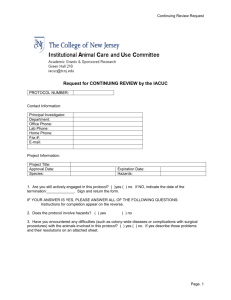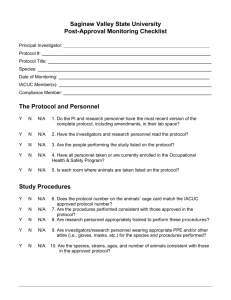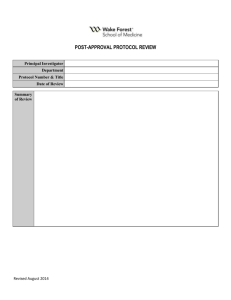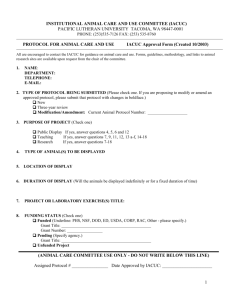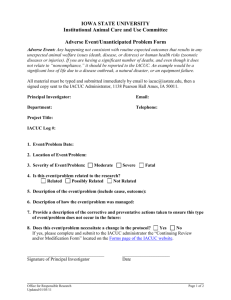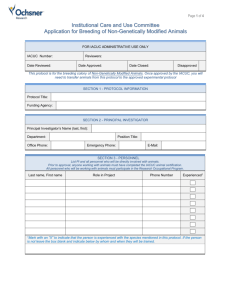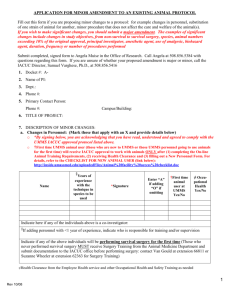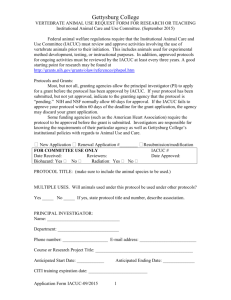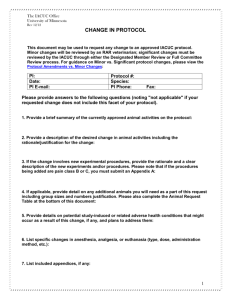IACUC Rodent Surgery/Anesthesia Record Keeping Guideline
advertisement
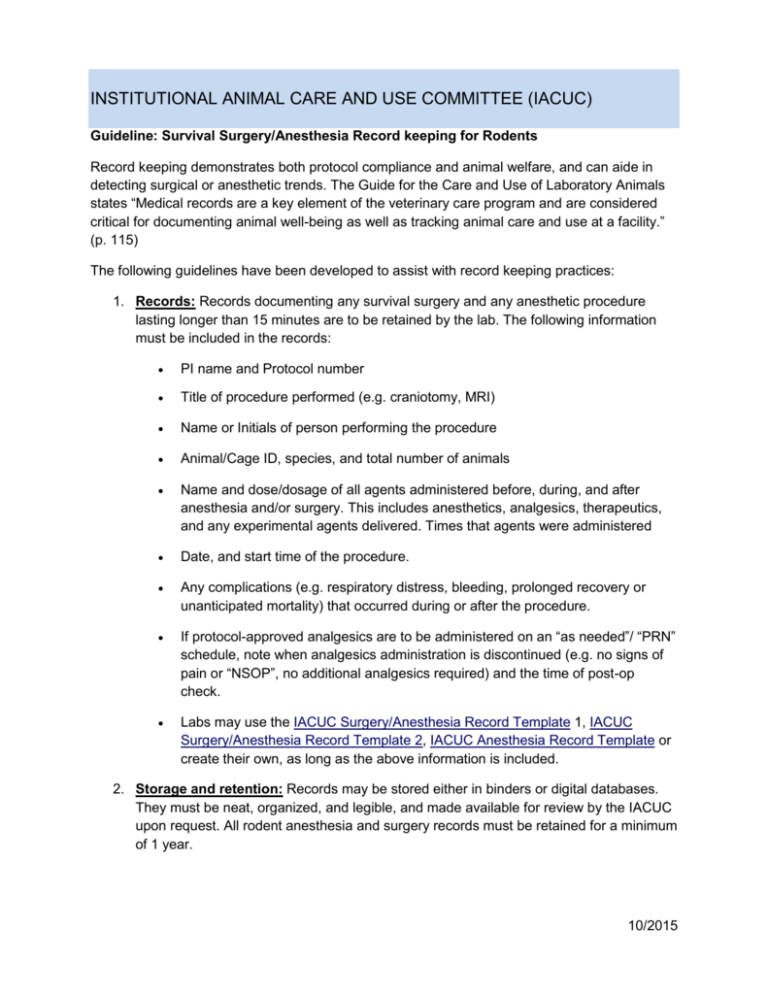
INSTITUTIONAL ANIMAL CARE AND USE COMMITTEE (IACUC) Guideline: Survival Surgery/Anesthesia Record keeping for Rodents Record keeping demonstrates both protocol compliance and animal welfare, and can aide in detecting surgical or anesthetic trends. The Guide for the Care and Use of Laboratory Animals states “Medical records are a key element of the veterinary care program and are considered critical for documenting animal well-being as well as tracking animal care and use at a facility.” (p. 115) The following guidelines have been developed to assist with record keeping practices: 1. Records: Records documenting any survival surgery and any anesthetic procedure lasting longer than 15 minutes are to be retained by the lab. The following information must be included in the records: PI name and Protocol number Title of procedure performed (e.g. craniotomy, MRI) Name or Initials of person performing the procedure Animal/Cage ID, species, and total number of animals Name and dose/dosage of all agents administered before, during, and after anesthesia and/or surgery. This includes anesthetics, analgesics, therapeutics, and any experimental agents delivered. Times that agents were administered Date, and start time of the procedure. Any complications (e.g. respiratory distress, bleeding, prolonged recovery or unanticipated mortality) that occurred during or after the procedure. If protocol-approved analgesics are to be administered on an “as needed”/ “PRN” schedule, note when analgesics administration is discontinued (e.g. no signs of pain or “NSOP”, no additional analgesics required) and the time of post-op check. Labs may use the IACUC Surgery/Anesthesia Record Template 1, IACUC Surgery/Anesthesia Record Template 2, IACUC Anesthesia Record Template or create their own, as long as the above information is included. 2. Storage and retention: Records may be stored either in binders or digital databases. They must be neat, organized, and legible, and made available for review by the IACUC upon request. All rodent anesthesia and surgery records must be retained for a minimum of 1 year. 10/2015 3. Protocol Congruency: Records must be congruent with anesthetic, surgical, and monitoring procedures described in the protocol. When writing or modifying the IACUC protocol: Provide flexibility when choosing anesthetics and analgesics whenever possible. List all drugs you might possibly use – drugs may occasionally become unavailable, so it’s best to have an alternative. Give yourself some flexibility in drug administration time intervals. Leave a time range for how often the medication is given (e.g. 6-8 hours post-procedure). Submit a protocol modification before making changes to the procedure or to personnel performing the procedure 4. Abbreviations: Make sure to use well known medical abbreviations. Abbreviating drug names can lead to confusion. Refer to the IACUC medical abbreviation chart. 5. Formatting: Format should be easy to follow and include the information listed above. Templates for records are available on both the IACUC and LARC websites. Tailoring the template to the protocol is strongly encouraged. 6. Resources: Contact the IACUC office at 415-476-2197 with questions or for assistance. 10/2015
